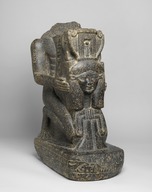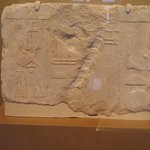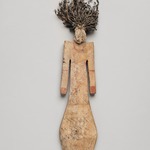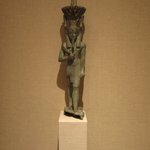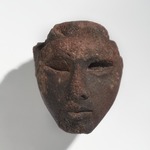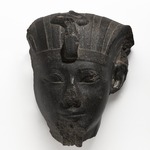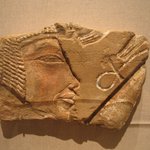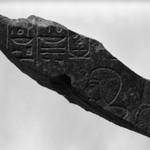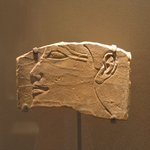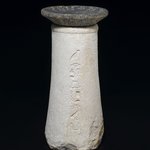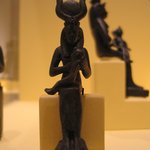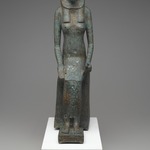

Kaemwaset Kneeling with an Emblem of Hathor, ca. 1400–1390 B.C.E. Granite, pigment, 26 1/8 x 10 1/4 x 17 13/16in. (66.3 x 26 x 45.3cm). Brooklyn Museum, Gift of Christos G. Bastis, 74.97. Creative Commons-BY (Photo: Brooklyn Museum, 74.97_threequarter_right_PS1.jpg)
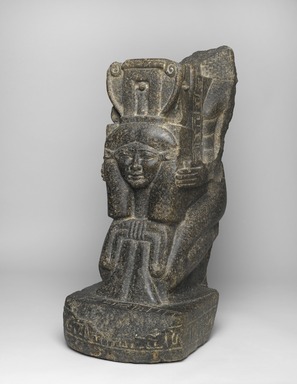
Kaemwaset Kneeling with an Emblem of Hathor, ca. 1400–1390 B.C.E. Granite, pigment, 26 1/8 x 10 1/4 x 17 13/16in. (66.3 x 26 x 45.3cm). Brooklyn Museum, Gift of Christos G. Bastis, 74.97. Creative Commons-BY (Photo: Brooklyn Museum, 74.97_threequarter_left_PS1.jpg)

Kaemwaset Kneeling with an Emblem of Hathor, ca. 1400–1390 B.C.E. Granite, pigment, 26 1/8 x 10 1/4 x 17 13/16in. (66.3 x 26 x 45.3cm). Brooklyn Museum, Gift of Christos G. Bastis, 74.97. Creative Commons-BY (Photo: Brooklyn Museum, 74.97_front_PS1.jpg)

Kaemwaset Kneeling with an Emblem of Hathor, ca. 1400–1390 B.C.E. Granite, pigment, 26 1/8 x 10 1/4 x 17 13/16in. (66.3 x 26 x 45.3cm). Brooklyn Museum, Gift of Christos G. Bastis, 74.97. Creative Commons-BY (Photo: Brooklyn Museum, CUR.74.97.jpg)
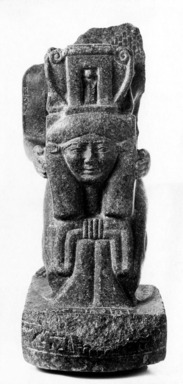
Kaemwaset Kneeling with an Emblem of Hathor, ca. 1400–1390 B.C.E. Granite, pigment, 26 1/8 x 10 1/4 x 17 13/16in. (66.3 x 26 x 45.3cm). Brooklyn Museum, Gift of Christos G. Bastis, 74.97. Creative Commons-BY (Photo: Brooklyn Museum, CUR.74.97_front_bw.jpg)
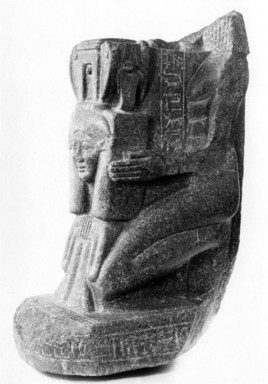
Kaemwaset Kneeling with an Emblem of Hathor, ca. 1400–1390 B.C.E. Granite, pigment, 26 1/8 x 10 1/4 x 17 13/16in. (66.3 x 26 x 45.3cm). Brooklyn Museum, Gift of Christos G. Bastis, 74.97. Creative Commons-BY (Photo: Brooklyn Museum, CUR.74.97_side_bw.jpg)
Kaemwaset Kneeling with an Emblem of Hathor
Egyptian, Classical, Ancient Near Eastern Art
On View: Old Kingdom to 18th Dynasty, Egyptian Galleries, 3rd Floor
The royal name carved on Kaemwaset’s upper right arm dates his statue to the reign of Thutmose IV. The rolls of flesh on his torso are an artistic convention indicating his prosperity. The object he holds represents the head of the goddess Hathor resting on a protective Isis-knot. On her head is a miniature temple gateway, flanked by two spiral or scroll shapes (called volutes). These forms suggest the sistrum, a musical rattle whose sound was beloved by Hathor and other goddesses. The cobra shown in the doorway and two others on the sides also evoke goddesses and their protection.
